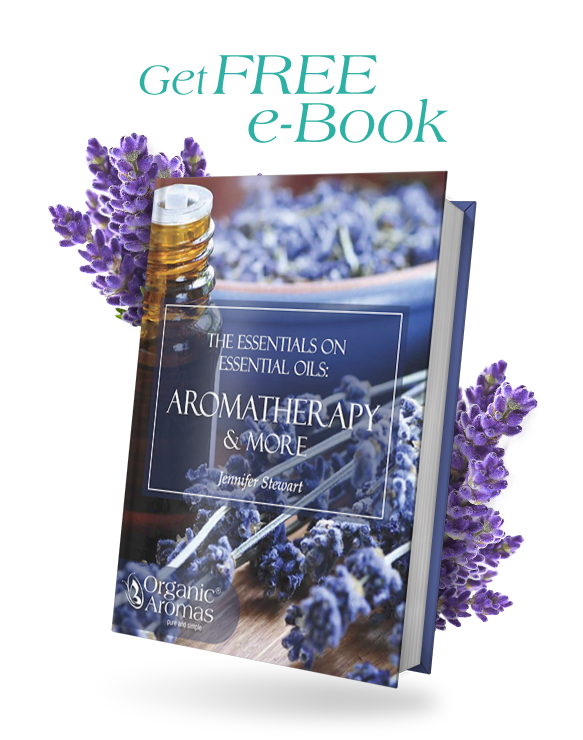Soothe Your Senses: Best Essential Oils for Fibromyalgia Relief
If you’re grappling with fibromyalgia, understanding how natural remedies like the best essential oils for fibromyalgia can offer relief is crucial. Essential oils such as lavender, peppermint, and eucalyptus have been identified as beneficial in easing various symptoms associated with fibromyalgia syndrome. With a focus on practical usage and merging anecdotal insights with safety advice, this article aims to empower you to explore these aromatic options as part of your overall management strategy.
Article Highlights
- Essential oils like lavender, peppermint, and eucalyptus offer therapeutic benefits for fibromyalgia symptoms, including pain relief and improved sleep, but should complement medical treatments.
- Combining essential oils can enhance their analgesic and anti-inflammatory effects, and homemade blends can be tailored for pain relief and sleep aid specifically for fibromyalgia sufferers.
- Safe usage of essential oils requires proper dilution, awareness of allergies, and consultation with healthcare providers, especially for those undergoing other treatments or taking medication.
Harnessing Nature’s Power: The Best Essential Oils for Fibromyalgia Symptoms

Among numerous fibromyalgia treatment options, essential oils are notable for their inherent therapeutic properties. Extracted from plants, these oils can alleviate:
- fatigue
- sleep disturbances
- memory lapses
- pain
- weakness
- mood disturbances
that fibromyalgia patients often experience. Essential oils offer not just physical relief, but also have the power to soothe the mind, contributing to improved quality of life.
Lavender, peppermint, and eucalyptus oils are considered top choices for fibromyalgia. These oils are celebrated for their potent soothing properties. They have gained recognition for their ability to offer pain relief and address fibromyalgia symptoms. While essential oils offer significant benefits, they should complement, not replace, medical advice from healthcare professionals and prescribed medications.

Sign Up to Get Your FREE
e-Book Here…
Lavender Oil: A Soothing Ally
Renowned for its calming properties, lavender oil can:
- Reduce stress and anxiety, common symptoms experienced by fibromyalgia patients
- Serve as a natural pain reliever when properly diluted and used topically
- Facilitate better sleep for those with fibromyalgia when used through inhalation
Lavender oil can be adjusted to individual comfort and safety levels, whether it’s applied topically post-dilution, consumed internally, or used for aromatic diffusion. Its soothing properties make it a potent ally in the battle against fibromyalgia symptoms.
Peppermint Oil: Cooling Comfort
With its invigorating scent, peppermint oil is a formidable weapon in combating fibromyalgia. Its benefits include:
- Anti-inflammatory properties
- Anti-spasmodic properties
- Cooling comfort to sufferers
- Counteracting the effects of fibro fog
- Enhancing cognitive function
Peppermint oil is a great natural remedy for managing fibromyalgia symptoms.
To fully harness the benefits of peppermint oil, it can be used in the following ways:
- In a nebulizing diffuser
- Applied topically in a diluted form with a carrier oil for massage
- For targeted relief, a blend of peppermint oil, eucalyptus oil, and ethanol can be created, relaxing muscles and reducing pain sensitivity.
Eucalyptus Oil: Clearing the Path to Relief
Eucalyptus oil, known for its invigorating aroma, carries anti-inflammatory properties that can help manage chronic musculoskeletal conditions, like fibromyalgia, by improving blood flow. Studies have shown that eucalyptus oil can significantly reduce pain and inflammation in individuals after total knee replacements, hinting at potential benefits for fibromyalgia sufferers.
The ability of eucalyptus oil to significantly lower blood pressure, as observed in clinical studies, may contribute to its therapeutic effects in improving circulation and blood flow, which is beneficial for fibromyalgia relief.
Diagnosing Fibromyalgia
Diagnosing fibromyalgia involves recognizing key symptoms such as muscle spasms, sore joints, and nerve pain, often concentrated around the upper neck. This condition is closely linked with issues in blood circulation and an overactive response to pain signals, which can severely impact one’s quality of life.
Effective management of fibromyalgia emphasizes the importance of stress relief and natural treatments. Essential oils for fibromyalgia have emerged as a popular method for alleviating symptoms, offering a holistic approach to pain relief and improving blood circulation.
The National Fibromyalgia Association highlights the significance of understanding fibromyalgia’s complexities and advocates for comprehensive care strategies. These include both medical interventions and lifestyle adjustments aimed at enhancing the immune system’s function and reducing the intensity of pain experienced by sufferers.

Understanding the Symptom Severity Scale
The Symptom Severity Scale for fibromyalgia is a critical tool designed to quantify the impact of the condition on patients. It does so by evaluating the severity of key symptoms beyond widespread pain, which is fibromyalgia’s hallmark symptom. This scale is part of the wider criteria developed for fibromyalgia diagnosis and ongoing assessment, helping healthcare providers to gauge the intensity of symptoms such as fatigue, waking unrefreshed, cognitive symptoms, and the extent of somatic symptoms experienced.
How It Works
The scale operates on a simple yet effective principle. Patients report the severity of their symptoms over the past week, assigning numerical values to their experiences in several categories. These categories encompass:
- Fatigue
- Waking Unrefreshed
- Cognitive Symptoms
- Somatic Symptoms (the number of symptoms outside of pain, such as irritable bowel syndrome, headaches, and numbness or tingling)
Each of these categories is scored, and the total provides healthcare professionals with a clearer picture of the patient’s condition. This quantification is invaluable, not only for diagnosing fibromyalgia but also for monitoring the illness over time and evaluating the effectiveness of treatment strategies.
The Importance of the Symptom Severity Scale
The Symptom Severity Scale serves several crucial functions in the management of fibromyalgia. Firstly, it offers a standardized method for evaluating the condition, facilitating a more objective approach to what is inherently a subjective experience. This standardization is vital for research, allowing for the comparison of study results and the development of targeted treatment strategies.
Moreover, the scale empowers patients by providing a structured way to communicate their symptoms and their severity. This communication is essential for tailoring treatment plans to individual needs, enhancing the patient-provider relationship, and ultimately, improving patient outcomes.
Blending for Synergy: Combining Essential Oils for Enhanced Effects

Blending essential oils is an art that can heighten their therapeutic effects, resulting in a synergy beneficial for fibromyalgia symptom management. Combining certain essential oils like ginger oil with citrus oils can enhance their analgesic effect, offering natural relief.
Peppermint oil blends well with eucalyptus oil and ethanol to enhance cognitive function or with lavender essential oil and helichrysum for anti-inflammatory properties vital in fibromyalgia treatment. Such synergistic blends can be easily created at home using fractionated coconut oil as a carrier, thanks to easy-to-follow recipes and guidelines.

Join Now and Get a Coupon for 10% Off!
Creating Your Own Pain Relief Blend
Crafting a custom pain management blend is an effective method for managing fibromyalgia symptoms, offering significant health benefits. This involves diluting essential oils with carrier oils like olive oil, coconut oil, or unscented lotions, which are gentle on the skin and enhance the absorption of essential oils. Adding essential oils to your regimen can provide targeted relief for discomfort and improve overall well-being.
A homemade massage oil can be created using a carrier oil, combined with selected essential oils such as:
- Bergamot
- Camphor
- Lemon
- Peppermint
- Rosemary
Incorporating these oils into your pain management strategy not only harnesses their therapeutic properties but also allows for a personalized approach to symptom relief.
For a specific fibromyalgia pain-relief massage oil recipe, mix 3 ounces of an oil base with a few drops of bergamot, camphor, lemon, peppermint, and rosemary essential oils, and store the blend in a glass jar in the refrigerator. Additionally, adding essential oils to a hot bath can amplify the health benefits, creating a soothing environment that promotes muscle relaxation, enhances blood circulation, and aids in stress relief. The warmth of the bath combined with the therapeutic properties of the essential oils offers a holistic approach to managing fibromyalgia symptoms, making it a valuable addition to your pain management toolkit.
Soothing Sleep Mix
Fibromyalgia patients commonly experience sleep disturbances, which can be alleviated by a soothing mix of essential oils to encourage restorative sleep. A sleep spray blend can be made with 10 drops of valerian essential oil and 15 drops of lavender essential oil mixed with 2 oz of distilled water, designed to aid fibromyalgia sufferers by promoting restorative sleep.
Spraying the sleep blend lightly on a pillow before bedtime can help fibromyalgia sufferers experience a more restful sleep. Including sandalwood oil in sleep blends may contribute to deeper rest and mood balance due to its rich scent.
Application Techniques: How to Use Essential Oils Safely

Safe usage of essential oils is critically important. This includes conducting a patch test before using essential oils to prevent skin sensitivities and adverse reactions. Essential oils must be diluted with a carrier such as almond oil or coconut oil to mitigate the risk of phototoxicity when applying to the skin.
Awareness of potential allergies, such as reactions to pink pepper which is related to cashews, is essential for safe topical application. Always keep essential oils out of reach of children and pets, and be aware that some oils may be toxic to animals, especially cats.

Sign Up to Get Your FREE Essential Oils e-Book Here
Direct Application: Dilution Is Key
Appropriate dilution is crucial when directly applying essential oils to the skin. Essential oils must be diluted with a carrier oil like olive oil, coconut oil, or unscented lotions to prevent skin irritation or sensitization.
A skin patch test involves:
- Diluting the essential oil with a carrier oil
- Applying it to the inner elbow
- Covering it
- Monitoring for 48 hours for adverse reactions
Remember, no adverse reaction from a patch test doesn’t fully ensure the absence of future allergic reactions, as individuals may be allergic to the plant source of the essential oil itself.
Aromatic Benefits: Nebulizing for Potency
A nebulizing diffuser is recommended for achieving maximum aromatherapy benefits. A nebulizing diffuser operates without water or heat, using the Bernoulli principle to atomize essential oils into fine micro-particles, which preserves their therapeutic properties and delivers a professional level of aromatherapy at home.
Nebulizing diffusers are particularly beneficial for larger spaces due to their ability to distribute a strong concentration of essential oils and are often constructed from premium materials like custom-blown glass and wood. They feature low energy consumption and are often equipped with safety features, such as an auto shut-off to prevent overexposure which can be a stressor to the nervous system.
Beyond Pain: Addressing Mental Symptoms with Aromatherapy

Beyond physical pain, fibromyalgia patients frequently deal with mental symptoms such as stress and anxiety. Essential oils like sweet orange and bergamot have stress-relieving properties that can reduce these symptoms. Aromatherapy can play a crucial role in managing both the emotional and physical aspects of fibromyalgia.
Frankincense oil may contribute to a greater sense of relief, balance, and safety, aiding in the management of both the emotional and physical aspects of fibromyalgia. The integration of essential oils into a comprehensive treatment plan for fibromyalgia can enhance the efficacy of other therapies and improve the overall quality of life for patients.
Bergamot Oil: Lifting Spirits Naturally
Known for its citrusy aroma, bergamot oil is recognized for its capacity to alleviate stressful thoughts, which is vital for rest and mood regulation in fibromyalgia patients. Inhalation of bergamot oil has a calming effect on the central nervous system, contributing to mood upliftment and emotional balance.
The relaxing properties of bergamot oil are partly attributed to its action on the 5-HT1A receptor, which plays a crucial role in managing anxiety. The use of bergamot oil in aromatherapy can be a powerful tool in managing the mental symptoms of fibromyalgia.
Sandalwood Oil: Serenity for the Mind
Sandalwood oil, with its rich, woody scent, is renowned for its calming properties. It contains santalol, which has a sedative effect on the central nervous system, contributing to its known calming properties.
Inhalation of sandalwood oil can lead to an increment in non-rapid eye movement (NREM) sleep, thus improving sleep quality. Using sandalwood oil in sleep blends is advised for its emotional evening effects, which facilitate relaxation and contribute to mental serenity during bedtime.
Complementary Therapies: Partnering Essential Oils with Other Treatments

Combining essential oils with other complementary therapies can offer a holistic approach to managing chronic pain. Techniques like:
- Upper cervical chiropractic care
- Massage therapy
- Yoga
- Pilates
- Cognitive behavioral therapy
Essential oils can be potent allies in managing chronic pain, such as fibromyalgia, as the body processes pain signals. The integration of these oils into various therapies can provide additional pain relief and decrease muscle pain, which is a common issue for many individuals looking to treat fibromyalgia.
Acupuncture, when paired with essential oils, is suggested as a safe combination treatment that could be particularly effective for some individuals dealing with fibromyalgia. By incorporating essential oils into a wider treatment plan, fibromyalgia sufferers can enjoy a more comprehensive approach to symptom management.
Other Essential Oils that can be Used to Help Fibromyalgia Syndrome
In addition to the commonly used essential oils for fibromyalgia pain relief, there are several other oils known for their therapeutic properties that can significantly benefit individuals suffering from Fibromyalgia Syndrome. These essential oils can be used in various ways, including massage blends, baths, or diffusers, to help alleviate symptoms associated with this condition.
Black pepper oil is renowned for its warming properties, which can improve blood circulation and reduce feelings of discomfort and stiffness in the muscles. Its analgesic qualities make it a powerful ally in combating muscle pains and aches.
Ginger oil is another potent oil that can help with fibromyalgia, especially due to its anti-inflammatory properties. It can help soothe sore joints and muscles, providing relief from pain and enhancing mobility.
Tea tree oil, while best known for its antimicrobial properties, can also support the immune system, a crucial aspect for individuals with fibromyalgia. Its ability to help fight infections can be particularly beneficial for those with compromised immune function.
Roman chamomile is celebrated for its calming effects on both the mind and body. It can aid in reducing stress, one of the key triggers of fibromyalgia flare-ups, and help improve sleep quality, which is often a challenge for those with this syndrome.
Clary sage is another essential oil that offers considerable relief for fibromyalgia symptoms. It’s particularly effective in easing muscle spasms and tension, promoting relaxation, and supporting hormonal balance, which can influence fibromyalgia symptoms.
Basil oil has properties that can help reduce fatigue, a common symptom of fibromyalgia. Its stimulating nature can help improve energy levels and mental clarity, making it easier to manage the daily challenges of the syndrome.
Precautions and Considerations Before Using Essential Oils
Before initiating the use of essential oils, understanding their proper and safe usage is critical. Always consult with a healthcare provider before using essential oils to ensure that you receive personalized treatment recommendations and discuss any potential risks.
Remember, when using essential oils:
- Some essential oils may interact with medications or supplements, so be cautious and consult healthcare professionals to prevent potentially adverse effects.
- Essential oils should never be ingested.
- Proper dilution ratios are necessary for safety and efficacy.
Final Thoughts
From lavender’s soothing qualities to peppermint’s cooling comfort, essential oils offer a natural and effective way to manage fibromyalgia symptoms. Whether used individually or synergistically, their potential to relieve physical and mental symptoms is undeniable. Moreover, the integration of essential oils with other complementary therapies provides a comprehensive approach to managing fibromyalgia. However, it’s crucial to use these oils safely, following recommended dilution ratios and conducting patch tests to prevent adverse reactions.
Frequently Asked Questions (FAQs)
Which essential oils are best for fibromyalgia?
For fibromyalgia, consider using essential oils such as lavender, peppermint, sandalwood, eucalyptus, nutmeg, and ginger to help relieve pain and improve mental stimulation. These oils are known for their stress-relieving, calming, and pain-reducing properties.
What is the strongest essential oil for deep muscle pain?
The most effective essential oils for relieving deep tissue pain include peppermint, eucalyptus, lavender, rosemary, and ginger. These oils have anti-inflammatory and analgesic properties that can help reduce muscle soreness and stiffness.
What is the best thing to take for fibromyalgia pain?
The best medications to take for fibromyalgia pain are pregabalin (Lyrica), duloxetine (Cymbalta), and milnacipran (Savella), which are FDA-approved for treating fibromyalgia. Other options may include amitriptyline, cyclobenzaprine, and gabapentin, but they are typically considered first-line treatments. Taking these can help manage pain and fatigue associated with fibromyalgia.
Can essential oils cure fibromyalgia?
No, essential oils cannot cure fibromyalgia, but they can help manage its symptoms and improve the quality of life for people with the condition.
Can I use essential oils in combination with other therapies?
Yes, essential oils can be effectively used in combination with other therapies such as massage, yoga, and acupuncture to achieve a holistic approach to treatment.











